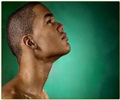A non-invasive Respiratory Stress Response (RSR) is able to measure the existence of significant coronary artery disease (sCAD.

The data, demonstrate that RSR was significantly lower in patients with sCAD compared to those with non-significant CAD, and yielded a sensitivity of 83pct and specificity of 70pct.
In multivariable analysis RSR was found to be an independent marker of S-CAD, far stronger than other traditional risk factors.
Researchers at Barzilai Medical Center used the innovative RSR developed by SPIROCORTM Ltd.
The test uses a Pulse Oximeter (PPG) to measure a patient's blood flow in the finger in response to his or her paced breathing for 70 seconds.
PPG data captured in the study are recorded immediately and analyzed using a proprietary algorithm that determines the RSR in a percent value.
Advertisement
"This study shows that the SPIROCOR test is a simple, non-invasive and less time-consuming test that independently predicts significant coronary artery disease in patients referred for a coronary artery evaluation," he added.
Advertisement
In the study, the RSR test was performed on a total of 193 consecutive patients referred for coronary angiography to exclude sCAD.
Coronary angiography was performed on all subjects and analyzed by cardiologists who were blinded to the RSR results.
The mean patient age was 63.2, and the majority of patients were men (70%). There were no significant differences between patients with sCAD and those with non-sCAD with respect to risk factors.
Patients with sCAD had more incidences of recent MI, while patients without sCAD had not had recent MI. No side effects were reported during the study.
Additional multicenter, community-based studies under varying clinical settings and patient populations are warranted to rigorously assess the value of this test for the detection of S-CAD.
The study has been published in the current issue of The American Journal of the Medical Sciences.
Source-ANI
SAV















